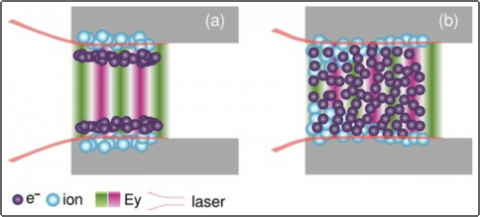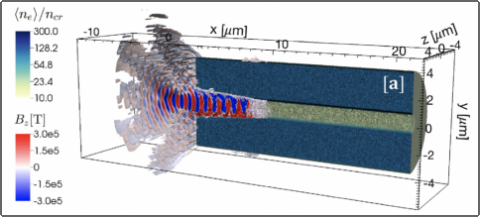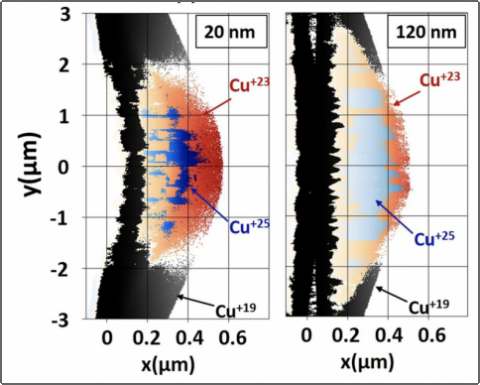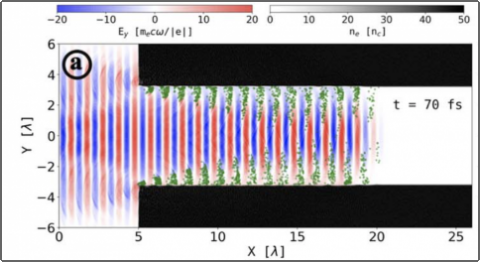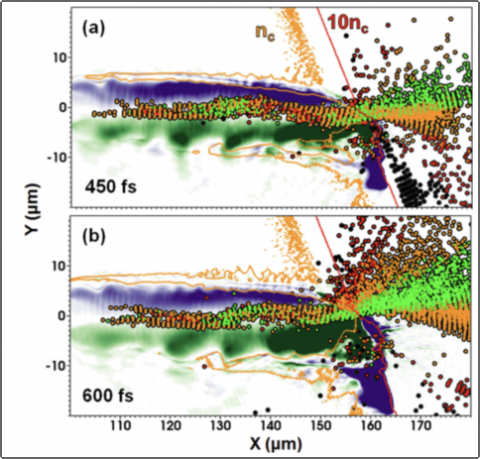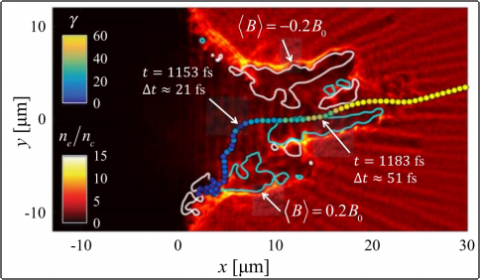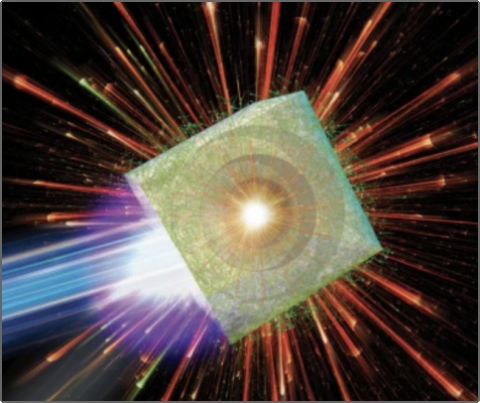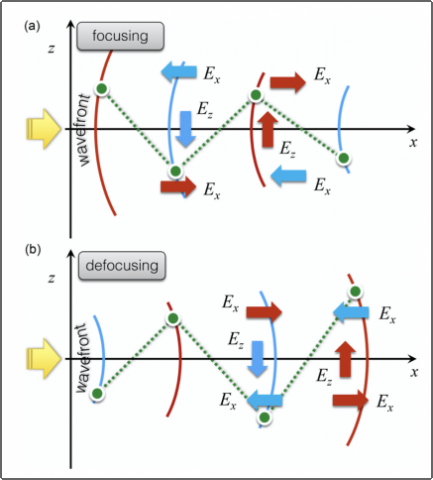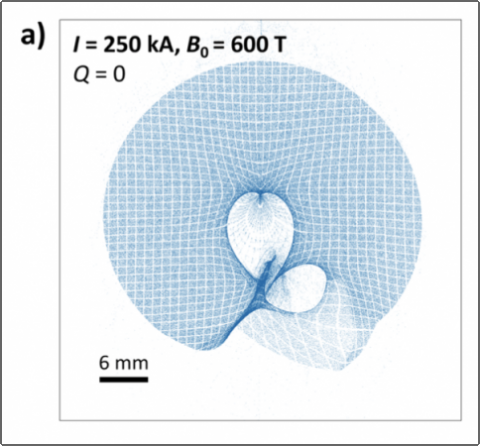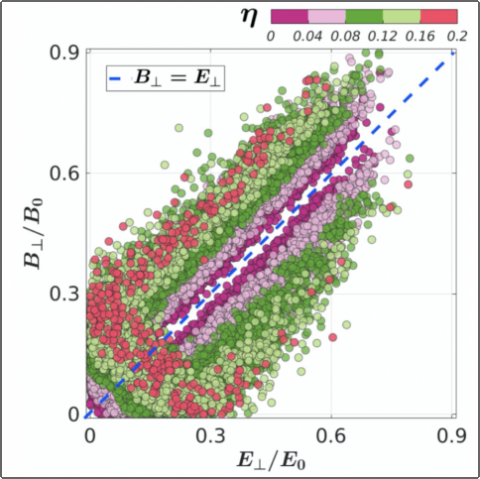Impact of ion dynamics on laser-driven electron acceleration and gamma-ray emission in structured targets at ultra-high laser intensities
T. Wang, Z. Gong, K. Chin, and A. Arefiev, "Impact of ion dynamics on laser-driven electron acceleration and gamma-ray emission in structured targets at ultra-high laser intensities", Plasma Phys. Control. Fusion 61, 084004 (2019).
We examine the impact of the ion dynamics on laser-driven electron acceleration in an initially empty channel irradiated by an ultra-high intensity laser pulse with I > 1022 W cm−2. The negative charge of the accelerated electrons inside the channel generates a quasi-static transverse electric field that causes gradual ion expansion into the channel. Once the ions fill the channel, the pinching force from the quasi-static magnetic field generated by the accelerated electrons becomes uncompensated due to the reduction of the quasi-static transverse electric field. As a result there are two distinct populations of accelerated electrons: those that accelerate ahead of the expanding ion front while moving predominantly forward and those that accelerate in the presence of the ions in the channel while performing strong transverse oscillations. The ions diminish the role of the longitudinal laser electric field, making the transverse electric field the dominant contributor to the electron energy. The ion expansion also has a profound impact on the gamma-ray emission, causing it to become volumetrically distributed while reducing the total emitted energy. We formulate a criterion for the laser pulse duration that must be satisfied in order to minimize the undesired effect from the ions and to allow the electrons to remain highly collimated. We demonstrate the predictive capability of this criterion by applying it to assess the impact of a given pre-pulse on ion expansion. Our results provide a guideline for future experiments at multi-PW laser facilities with ultra-high intensities.
